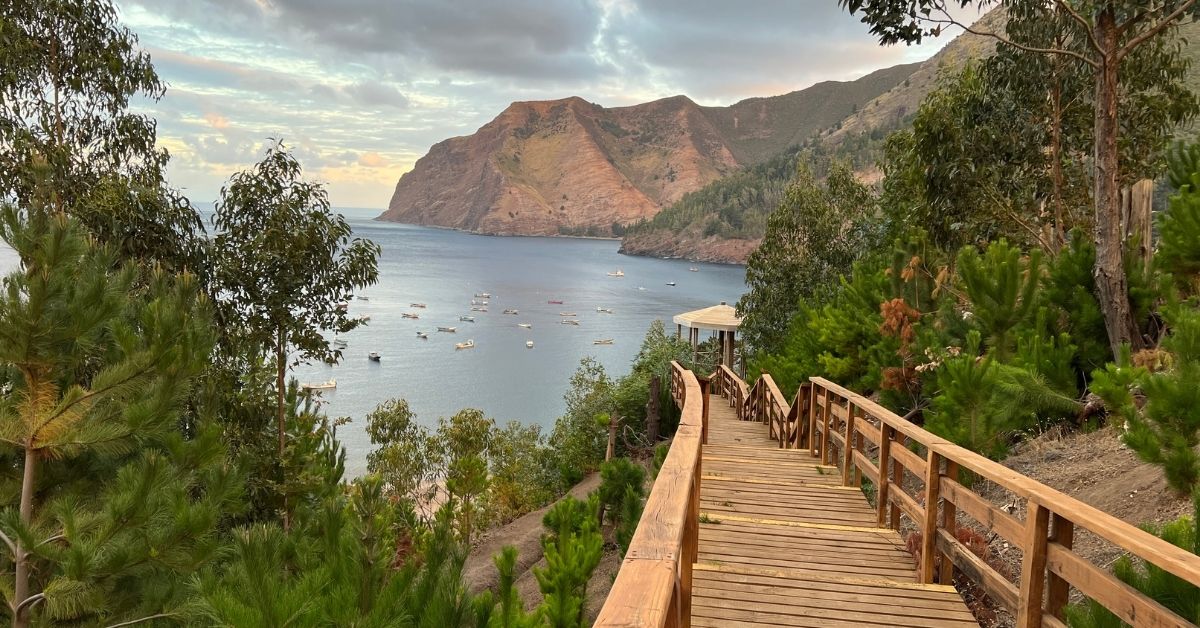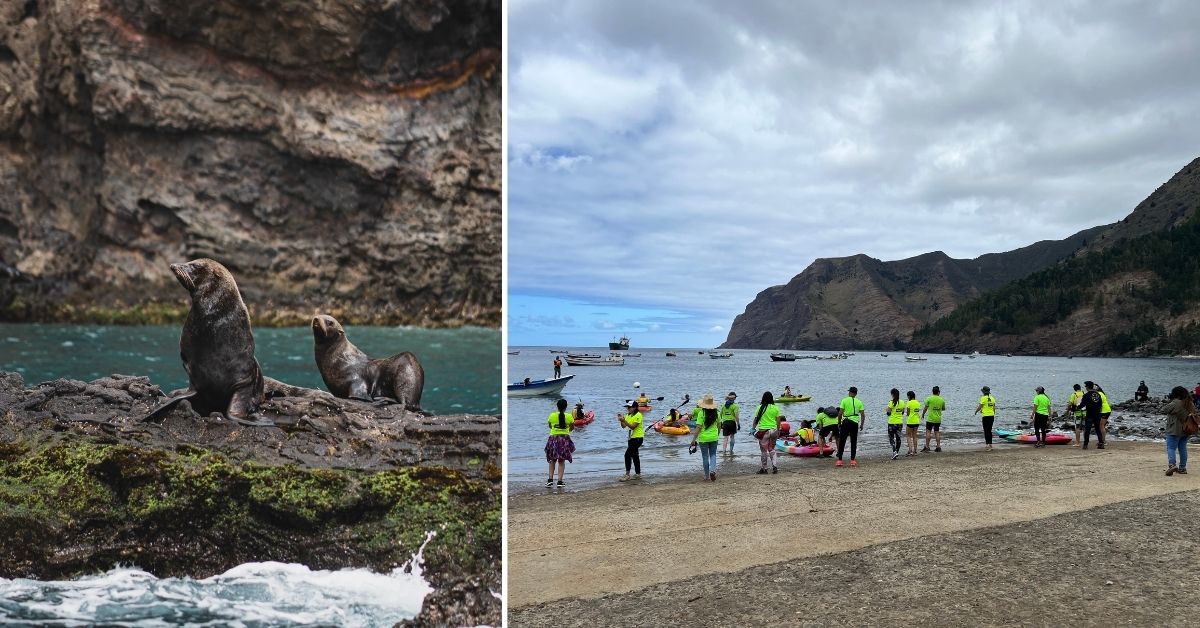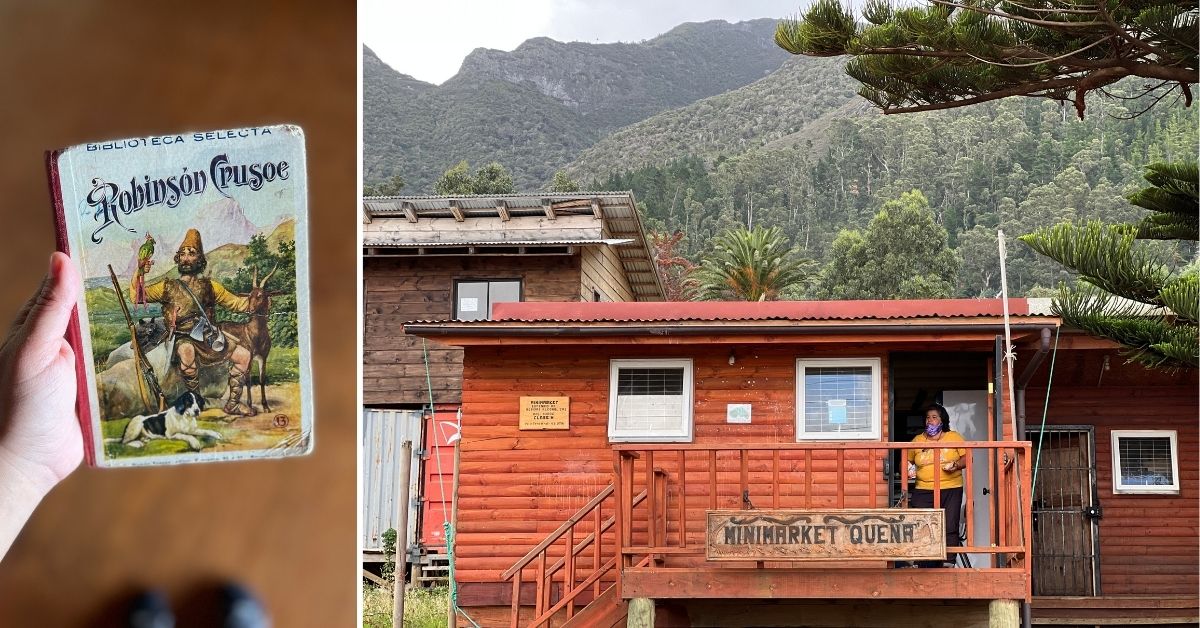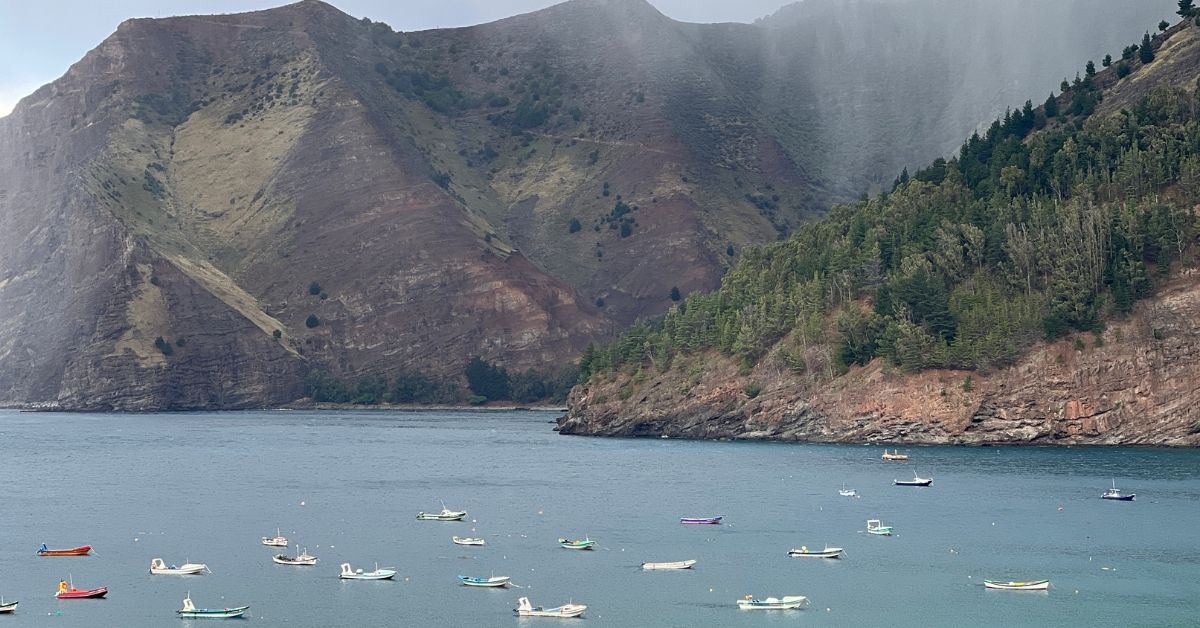A Magical Journey to The World’s Remotest Island to Document & Conserve Biodiversity
The muse who inspired Daniel Defoe’s most famous work of fiction, Robinson Crusoe Island located 700 km off mainland Chile hosted a team of eco-conscious professionals including Shivya Nath. Here's how her trip is helping save endangered species and the island community of the island.

This article has been sponsored by Lenovo.
You wake up to the crashing sounds of waves, and the first glimpse outside the window fills your face with the golden glow of the rising sun 0n Robinson Crusoe Island. The cacophony of traffic you are used to is replaced by the periodic call of the island birds called the pink-footed shearwaters. And the air enriched with the salty sea-water ushers in another day of fresh beginnings.
Most mornings, for Shivya Nath, a storyteller and traveller, begin this way. The picturesque landscape is a living, breathing dream you wake up to, says Shivya, reminding us that this beauty is fleeting.
Home to a close-knit population of just a thousand people and hundreds of species of plants and animals, most of which are endemic, Robinson Crusoe Island has been Shivya’s home for the past few weeks. Along with a team of eco-conscious individuals from different walks of life, she is on the island to make a difference and help preserve its natural beauty.
Robinson Crusoe Island: On An Exotic Mission

Robinson Crusoe Island, located 700 km off mainland Chile, was about to host a team of eco-conscious professionals, including Shivya. She was one among the team of eco-conscious professionals selected by Lenovo for its Work for Humankind program initiated in collaboration with NGO Island Conservation and the Chilean government.
Flying over on a 6-seater plane built in the 1970s (the only way to fly to the island) Shivya landed on February 14 and was welcomed by troupes of sea lions swimming in the Pacific waters at the boat jetty near the airport. This was indicative of the island’s incredible biodiversity which is considered to be richer than even the Galapagos Islands.
“This island is a microcosm of the entire world and a living example of the impact of centuries of human influence on the planet. One of the largest of the Juan Fernandez Islands, a remote archipelago in Chile, this island is home to numerous endangered species fighting for survival every day. Even though 97 per cent of the archipelago is a protected national park, environmentalists and conservationists continue to face challenges daily,” she says.
Shivya has spent over a decade travelling to different parts of the world, advocating the need for eco-conscious, sustainable tourism. And yet it was on this island that she truly witnessed the gravity of endangerment of wildlife and extinction.
“We often read reports published by global organisations like the World Wide Fund for Nature (WWF) or even the IPCC highlighting the impact of climate change and unsustainable practices on the environment and wildlife. Reading about the data, however shocking, wasn’t as impactful as witnessing it all in front of your eyes. Realising that there are no easy solutions and that an island like this has endured so much, from colonisation, and human exploitation to the invasive vertebrates that threaten endemic species, was all very overwhelming but valuable. It was a great learning experience,” shares Shivya, who has been working on social impact initiatives that are impacting both the local community and the island biodiversity. Empowered by Lenovo’s smart technology, Shivya along with other selected volunteers are working remotely for one month while volunteering 20 hours a week for conservation activities.
Building connections & a sustainable future

After 14-nights of quarantine, when Shivya was finally allowed to step out and explore the island, it was a moment of pure bliss and relief.
“I was especially taken aback by the unique landscape of the area. A few kilometres away from where we were stationed, we could see planet Mars-like red landscapes. Red soil, volcanic formations, an image of beauty and chaos. These hikes introduced us to the incredible endemic forests on the brink of extinction. The way the local community welcomed us to the island and into their lives was overwhelming – and even with my broken Spanish, I managed to make some beautiful, hopefully, lifelong friendships,” says Shivya.
Even though the unpredictable weather and fluctuating internet connection made the virtual world seem farther away, they brought her closer to the real world.
“It is a very different kind of life and culture. Human connections are treasured here. Minute-long conversations roll into hours, and it feels strange being glued to our laptop screens as we work remotely, realising that life happens outdoors here. Gradually, I ended up postponing my online work commitments to be fully present on the island, allowing it to draw me in, in beautiful and sometimes unexpected ways,” says the travel writer and sustainable tourism consultant.
Shivya has been working on several development projects, including an analytical study of the carbon footprint of every islander in comparison with a resident of the mainland or any part of the world.
She points out that the entire Robinson Crusoe island currently runs solely on diesel generators, used to generate electricity. Alongside the island municipality and other volunteers, Shivya is working to support the island in its transition to renewable energy sources, especially solar power. “A similar volcanic island in American Samoa recently transitioned to 100 per cent solar – so the technology already exists. We are putting together a technical and financial proposal to help accomplish this,” she adds.
In addition to this, these volunteers are also helping the community embrace alternative and sustainable farming techniques to grow their own food.

“Almost 99 per cent of all the produce on the island comes from the mainland, almost 700 kilometres away, on large boats twice a month. This is unsustainable and unhealthy, especially given that until a few decades ago, the islanders grew pretty much everything for their consumption. I drew inspiration from community farms I had the chance to visit in Cape Town, and we’ve begun to pilot the first community farming project on the island. We invited school students to visit one of the few idyllic family-run farms on the island, talk about the importance of fresh, organic food, and plant poroto grenado (cranberry beans) and potatoes. The next batch of volunteers will help set up a new greenhouse where students will plant their first school vegetable garden,” adds Shivya, who recently met the mayor
As this batch of volunteers gets ready to leave, another team is about to arrive to pick up where they will leave off. They will continue to bolster their efforts and provide new solutions enabling a cycle of sustainable change that will help conserve and reclaim the island’s endemic ecosystem and natural heritage.
Narrating a real-life transformation story that had a profound impact on her, Shivya shares, “Sometime in the 1800s, the Juan Fernandez Fur Seals – a species endemic to the archipelago and only found here – was declared extinct. But in the 1950s-60s, someone found about 200 seal pups in a small cave on an island in the archipelago and the islanders came together to protect them, with the Chilean government finally declaring their hunting (mostly by foreign ships) illegal. Their population has bounced back since, and I was lucky to have the rare opportunity to snorkel with them!”
If you found our stories insightful, informative, or even just enjoyable, we invite you to consider making a voluntary payment to support the work we do at The Better India. Your contribution helps us continue producing quality content that educates, inspires, and drives positive change.
Choose one of the payment options below for your contribution-
By paying for the stories you value, you directly contribute to sustaining our efforts focused on making a difference in the world. Together, let’s ensure that impactful stories continue to be told and shared, enriching lives and communities alike.
Thank you for your support. Here are some frequently asked questions you might find helpful to know why you are contributing?


This story made me
-
97
-
121
-
89
-
167











